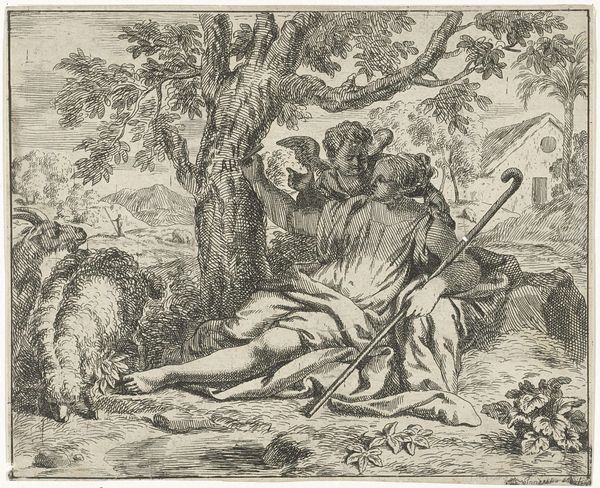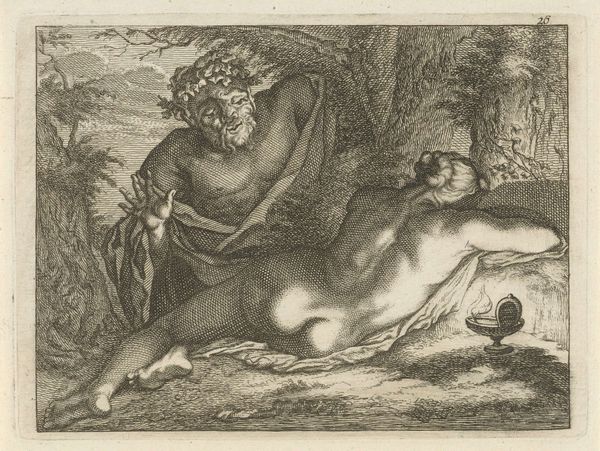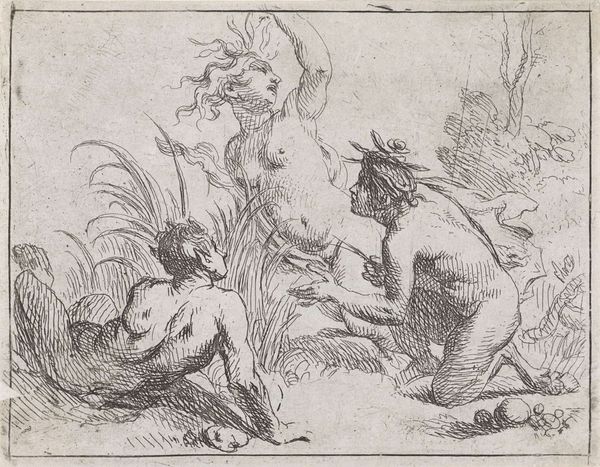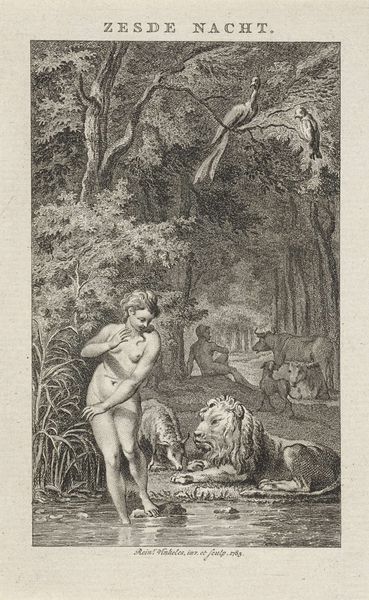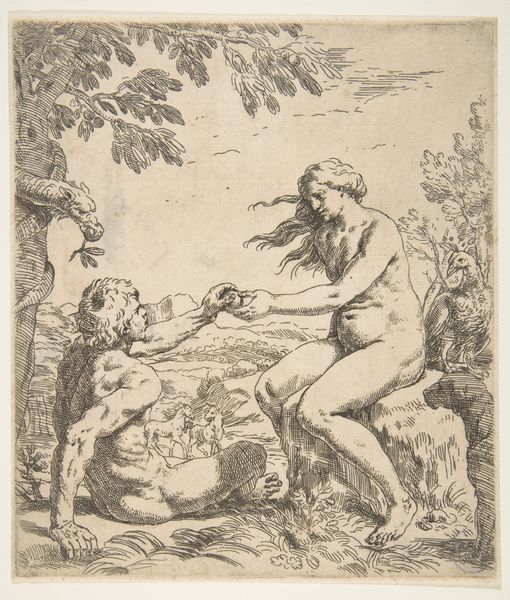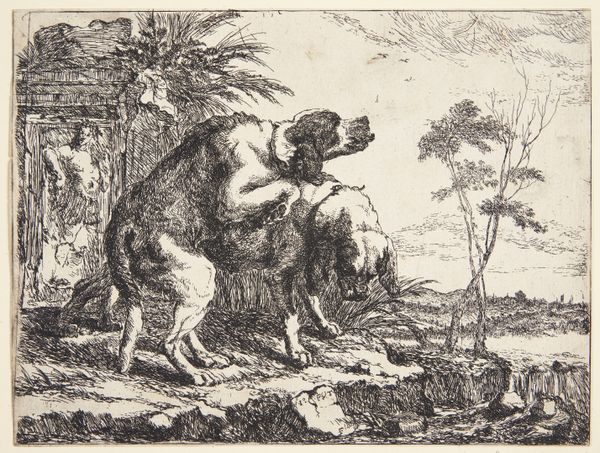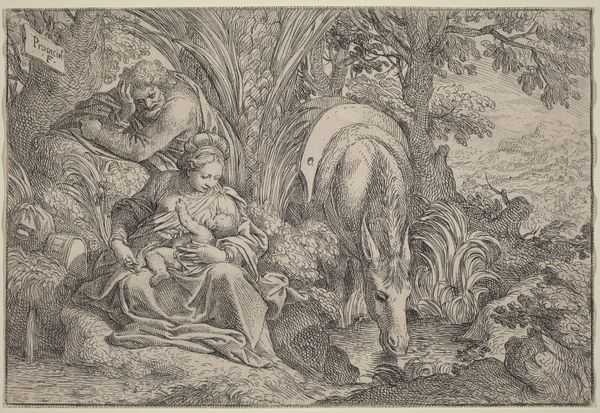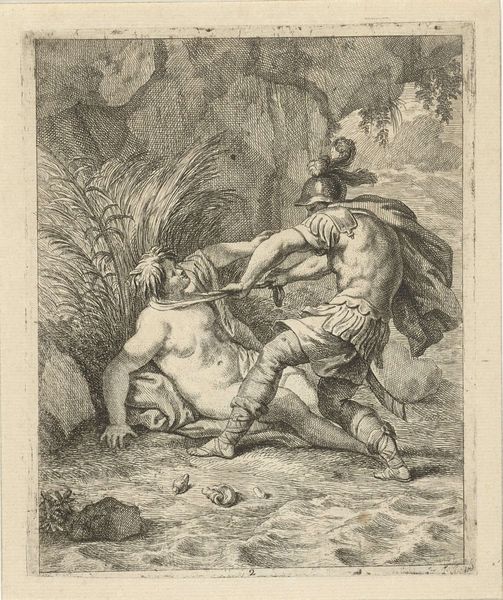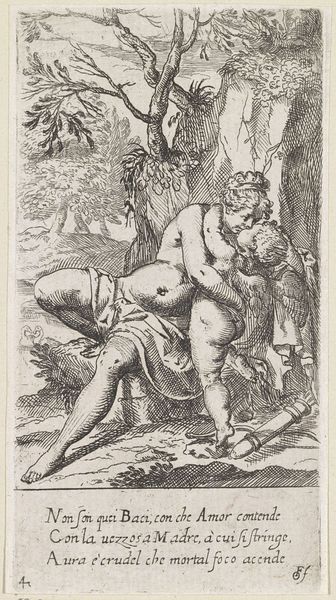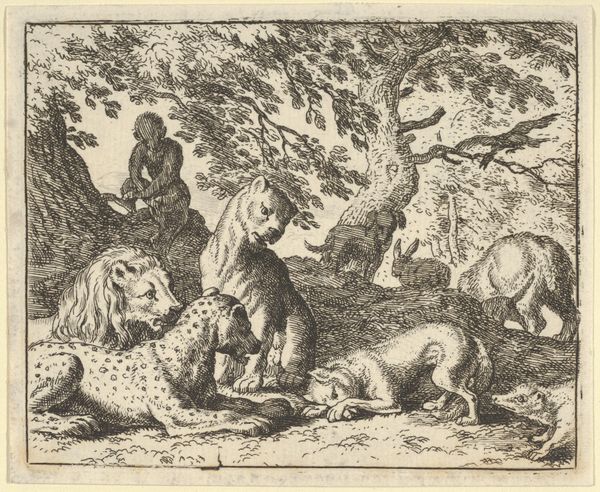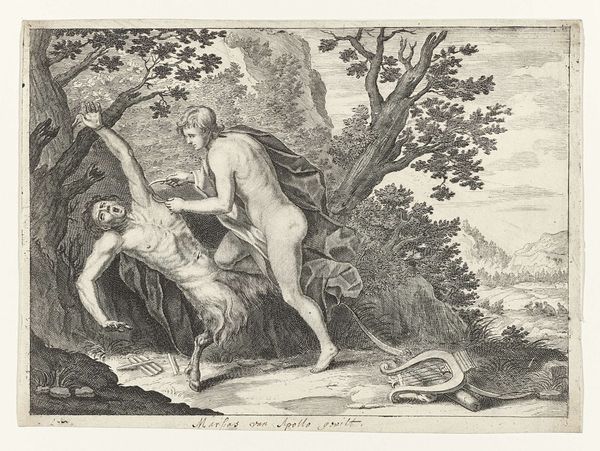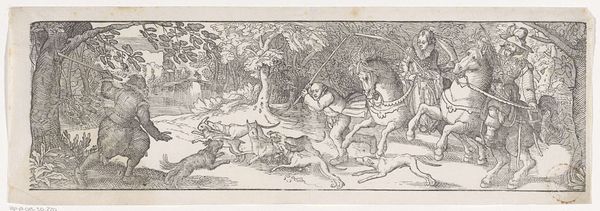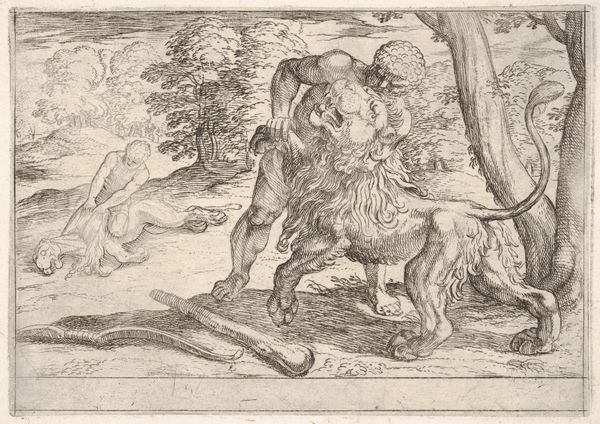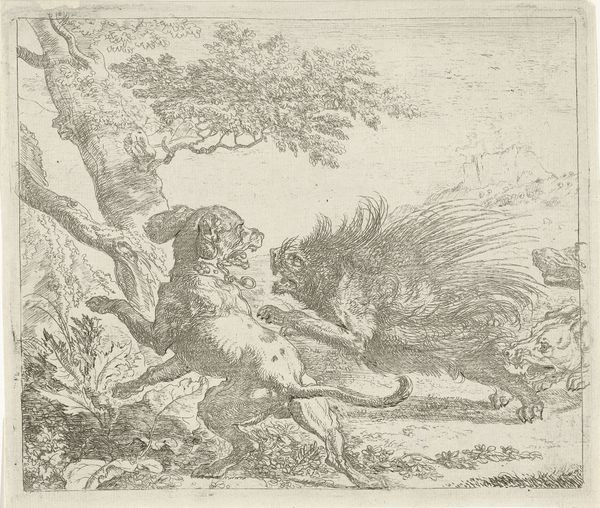
print, engraving
#
baroque
#
pen drawing
# print
#
figuration
#
history-painting
#
nude
#
engraving
Dimensions: height 120 mm, width 152 mm
Copyright: Rijks Museum: Open Domain
Curator: This delicate engraving, “Slapende Nimf bespied door een Sater,” dating from around 1688 to 1700, comes to us from the hand of Arnold Houbraken. It resides here at the Rijksmuseum. Editor: It's a remarkably intimate scene, despite the potential for…lewdness, I suppose. The light seems to almost caress the nymph’s back. It’s skillfully rendered, the hatching gives the bodies such form and volume. Curator: Exactly. Houbraken was a master of using these fine lines to suggest depth and texture. Think about the process—the engraver meticulously carving into the copperplate. But consider what these scenes say about power dynamics and gender roles in the era, displayed for bourgeois viewers. Editor: Yes, there's this undercurrent of…voyeurism and potential sexual assault. It makes me question the consumption of these kinds of images, the assumed male gaze being privileged even now, centuries after its making. The satyr is positioned outside the woman's personal boundaries in the most egregious manner, but presented to an art market audience in such a refined package. Curator: This interplay between "high" art and, perhaps, base desires is central. Consider the printing techniques: each print allows the commodification and wider availability of an exploitative scene. The labor that went into the physical creation of the copperplate – a skilled worker producing potentially harmful material for circulation, for example. Editor: And who are the intended consumers? We see glimpses of nudity used in history painting, acceptable in established, often allegorical contexts… How did the burgeoning art market change the modes of viewership? Curator: Precisely! The rise of an art market, aided by printmaking technology, fostered a cultural shift that can easily perpetuate unequal narratives about the male artist's ability to objectify his subject. It is troubling for viewers aware of contemporary politics. Editor: Looking closely, at the raw, brutal cuts on the satyr, it provides visual confirmation of a power differential to contrast against the serene quality in her back, with its subtle hatching... Well, thank you, Arnold, for presenting a rich and conflicted picture of human-animal dynamics of the age. Curator: Indeed. By looking past the aesthetic veneer and interrogating its origins and intended use, it creates a chance for audiences today to engage on several sociopolitical and cultural fronts. Thank you for lending insight to our appreciation of Houbraken.
Comments
No comments
Be the first to comment and join the conversation on the ultimate creative platform.
